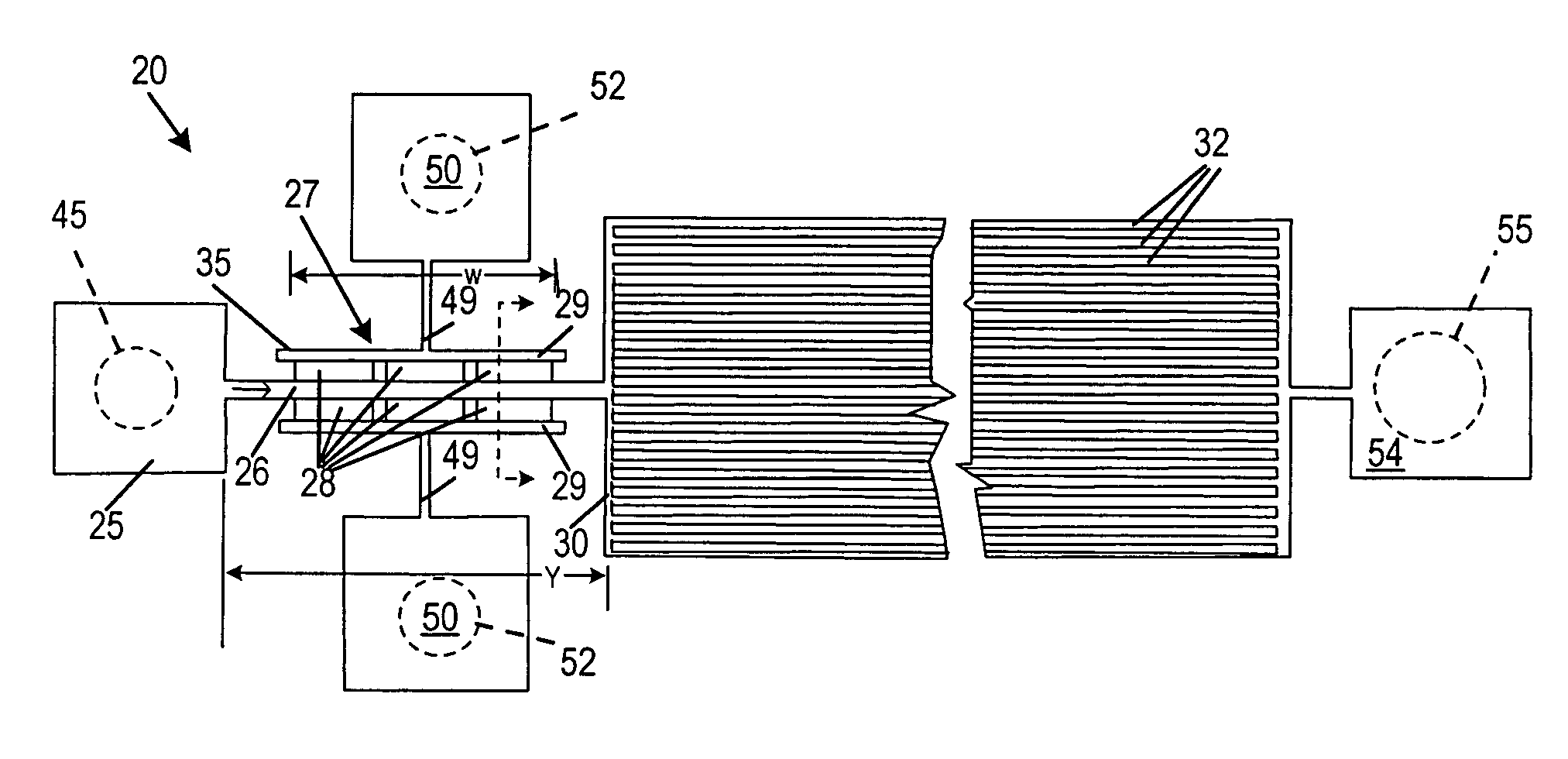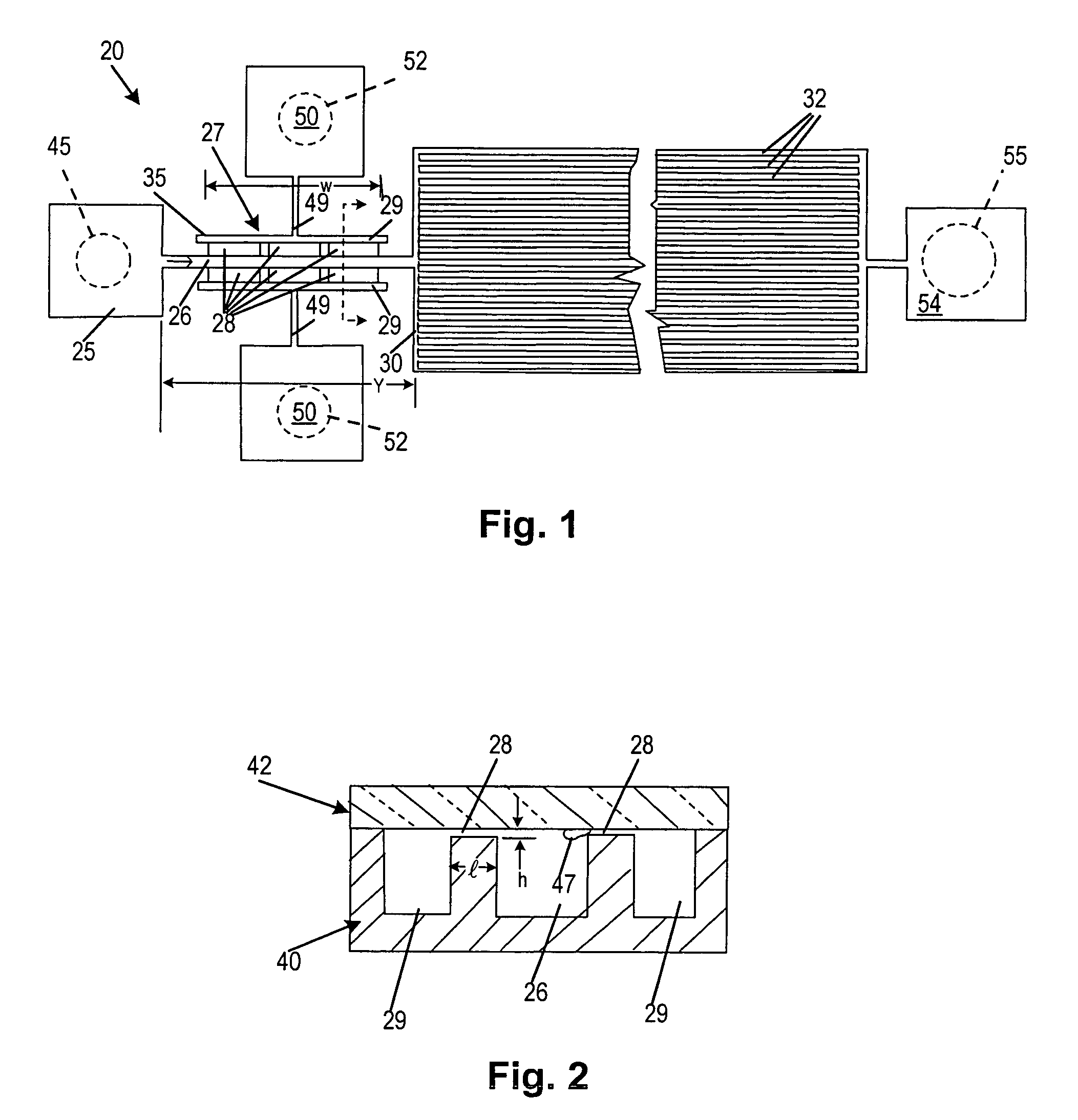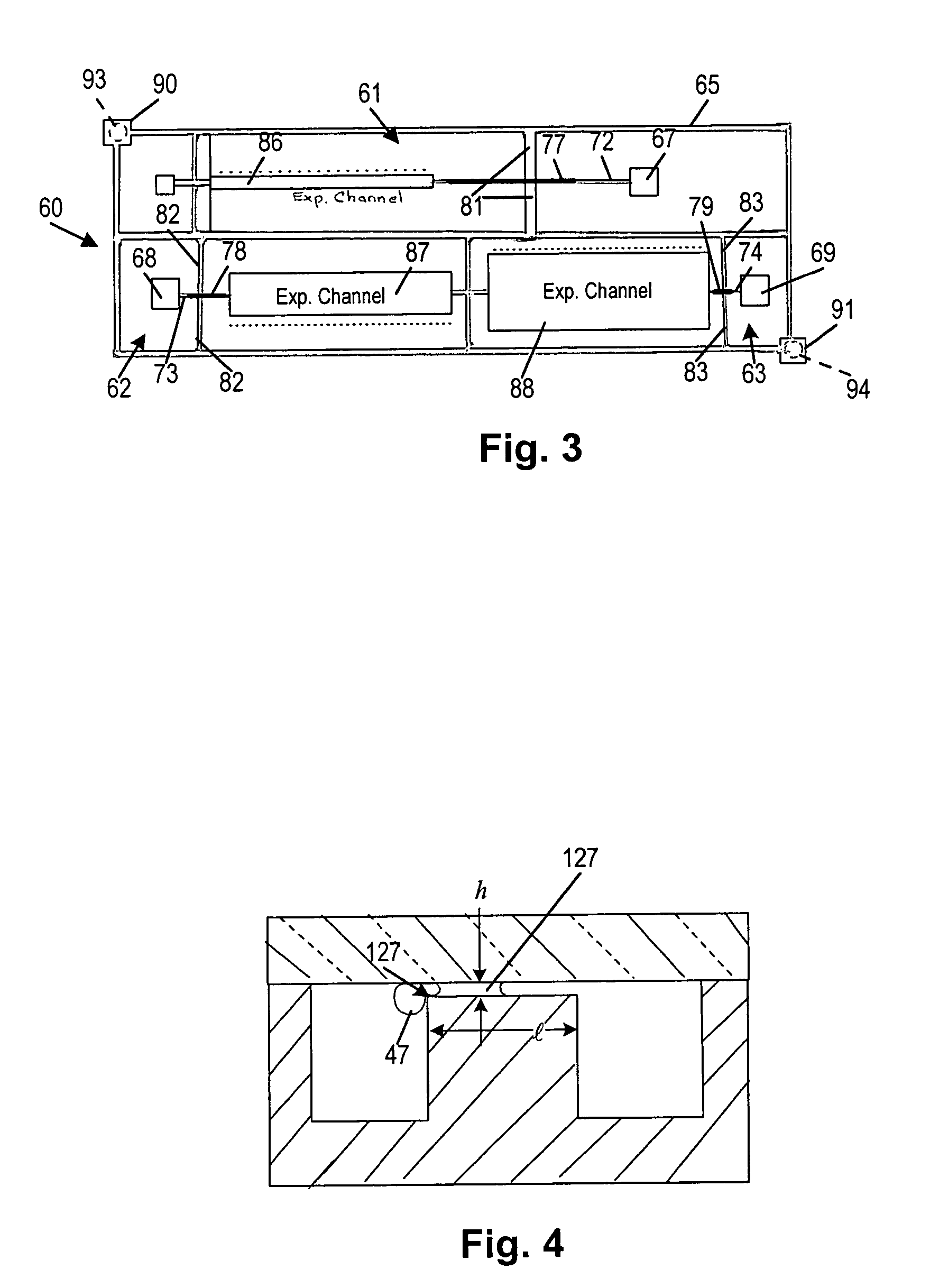Integrated apparatus and methods for treating liquids
a micro-device and liquid technology, applied in the direction of machines/engines, sedimentation separation, feed/discharge of settling tanks, etc., can solve the problems of limited application of microfluidic research specifically to the needs of clinical chemistry, high surface area to volume ratio, and little engineering design and development strategy to allow integrated or modular “on-chip” sample manipulation, etc., to achieve finely controlled geometrical and flow conditions
- Summary
- Abstract
- Description
- Claims
- Application Information
AI Technical Summary
Benefits of technology
Problems solved by technology
Method used
Image
Examples
Embodiment Construction
Microfilter
[0061]As illustrated in FIGS. 1 and 2, a microfiltering system 20 is fabricated in silicon and glass. This is done using methods similar to those used in integrated circuit fabrication as described below. The microfilter 20 has an input reservoir 25, a narrow filtration channel 26 containing a pair of transverse flow microfilters 27, a pair of plasma outlet channels 29 to collect filtrate. A downstream expanded channel 30 connects in series with the filtration channel 26. In one exemplary embodiment, the expanded channel 30 of the device contains an array of parallel, ˜45 μm wide, and 15 mm long flow channels 32, as shown in FIG. 1.
[0062]The microfilter 27 is a weir type filter fabricated as a series of rectangular openings 28, the ‘filter pores’, located on both sides of the 100 μm wide filtration channel 26. In one preferred exemplary embodiment, used for the fractionation of nanoliter amounts of whole blood, the dimensions of each filter pore was a width ‘w’ 200 μm wid...
PUM
| Property | Measurement | Unit |
|---|---|---|
| length | aaaaa | aaaaa |
| length | aaaaa | aaaaa |
| length | aaaaa | aaaaa |
Abstract
Description
Claims
Application Information
 Login to View More
Login to View More - R&D
- Intellectual Property
- Life Sciences
- Materials
- Tech Scout
- Unparalleled Data Quality
- Higher Quality Content
- 60% Fewer Hallucinations
Browse by: Latest US Patents, China's latest patents, Technical Efficacy Thesaurus, Application Domain, Technology Topic, Popular Technical Reports.
© 2025 PatSnap. All rights reserved.Legal|Privacy policy|Modern Slavery Act Transparency Statement|Sitemap|About US| Contact US: help@patsnap.com



